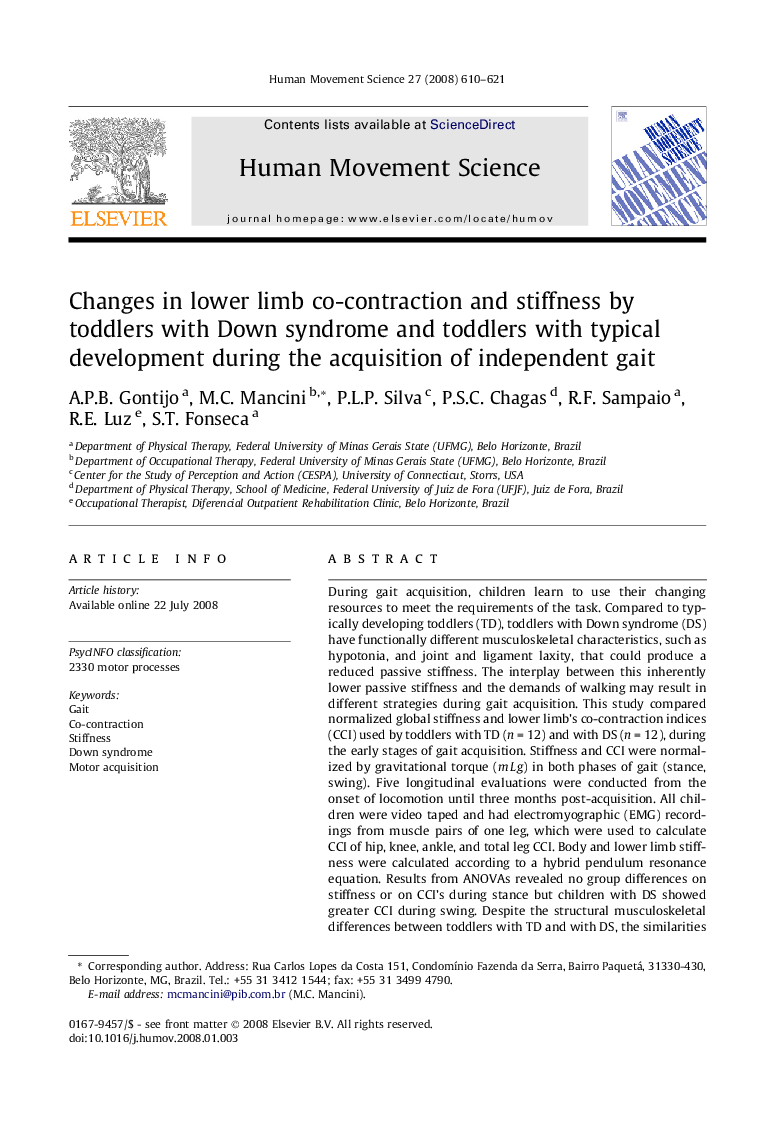| Article ID | Journal | Published Year | Pages | File Type |
|---|---|---|---|---|
| 928911 | Human Movement Science | 2008 | 12 Pages |
During gait acquisition, children learn to use their changing resources to meet the requirements of the task. Compared to typically developing toddlers (TD), toddlers with Down syndrome (DS) have functionally different musculoskeletal characteristics, such as hypotonia, and joint and ligament laxity, that could produce a reduced passive stiffness. The interplay between this inherently lower passive stiffness and the demands of walking may result in different strategies during gait acquisition. This study compared normalized global stiffness and lower limb’s co-contraction indices (CCI) used by toddlers with TD (n = 12) and with DS (n = 12), during the early stages of gait acquisition. Stiffness and CCI were normalized by gravitational torque (m L g) in both phases of gait (stance, swing). Five longitudinal evaluations were conducted from the onset of locomotion until three months post-acquisition. All children were video taped and had electromyographic (EMG) recordings from muscle pairs of one leg, which were used to calculate CCI of hip, knee, ankle, and total leg CCI. Body and lower limb stiffness were calculated according to a hybrid pendulum resonance equation. Results from ANOVAs revealed no group differences on stiffness or on CCI’s during stance but children with DS showed greater CCI during swing. Despite the structural musculoskeletal differences between toddlers with TD and with DS, the similarities observed in their processes of gait development suggest functional equivalences.
